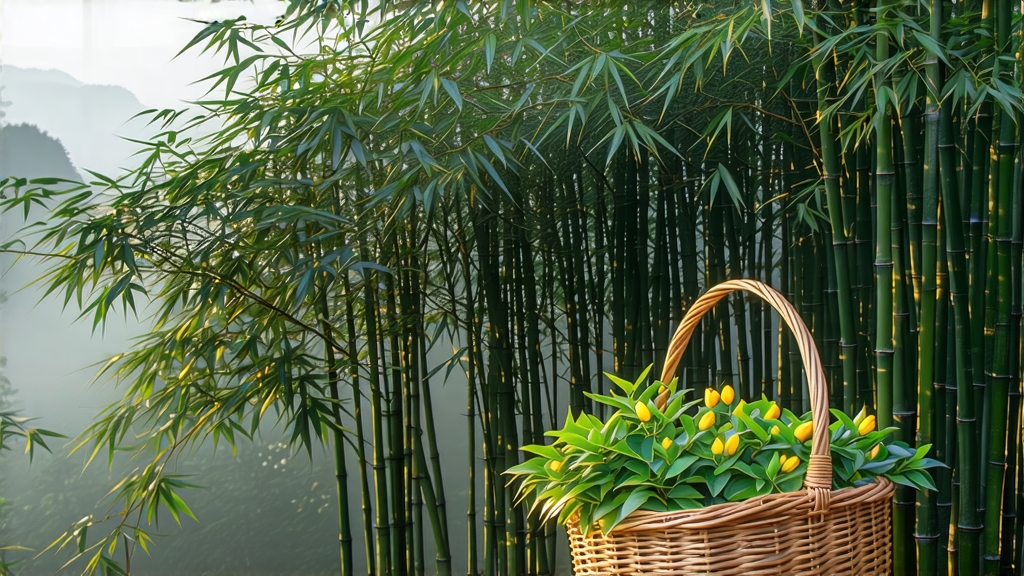
Meng Ding Huang Ya, literally “the yellow bud from Meng Ding,” is the least-known yet most aristocratic member of China’s six great tea families. While green tea commands the market and pu-erh fills collectors’ vaults, this yellow tea from the cloud-locked Meng Ding range of central Sichuan survives as a whispered legend among growers and a coveted jewel among connoisseurs. Its story begins in the Western Han dynasty, when the Taoist monk Wu Lizhen planted seven tea bushes on the summit of Meng Ding Mountain in 53 BCE, declaring the site “the fairy terrace where heaven drips dew.” By the Tang dynasty the same bushes—still alive today and protected by imperial edict—were supplying the emperor with “the tea that arrives before spring,” a tribute so prized that courier stations kept fresh horses saddled through the night to race the first picking to Chang’an. The Song court later codified the picking standard: “one bud, one newly unfurled leaf, before the Qingming festival,” a rule still followed by fewer than twenty families.
Yellow tea is not a half-fermented compromise between green and oolong; it is a deliberate alchemy that coaxes a micro-oxidation inside the leaf while the surface remains untouched. Meng Ding Huang Ya achieves this through the most labor-intensive of all yellowing routines, a three-day “sealed sweating” that begins the moment the leaves leave the tree. Picking starts at 4:30 a.m., when mountain mist is still thick enough to bead on the eyelashes; dew acts as a natural protective film against mechanical bruising. Leaves are deposited into bamboo baskets lined with fresh banana leaf, never deeper than five centimeters, then rushed downhill to the village courtyard where the master’s first decision—whether to fire in the morning sun or in a charcoal-heated wok—will echo through every later infusion.
The kill-green step lasts exactly 108 seconds at 160 °C, a number chosen because 108 is sacred in both Taoist and Buddhist reckoning. The leaves are tossed by hand in a wok seasoned with twenty years of tea oils; the motion resembles calligraphy, each flip a horizontal stroke that seals the grassy volatiles without scorching the downy tip. While still above 50 °C the leaves are wrapped in three successive layers—yellow silk, then rice paper, then a hemp cloth—creating a sauna that traps both heat and moisture. Every forty minutes the parcel is opened, the leaves gently fanned, then re-wrapped; this “men huang” (闷黄) cycle repeats through the afternoon and deep into the night. During the second night the leaf edges turn primrose, while the midrib remains jade; by dawn the entire shoot has shifted to the color of antique ivory, and a scent reminiscent of fresh corn silk drifts through the cloth.
Firing follows, but not the fierce bake of green tea. Instead the master uses a bamboo tube laid above a charcoal pit no hotter than 80 °C. The leaves are rolled inside the tube for six hours, absorbing a faint bamboo fragrance while losing their final five percent of moisture. When finished, a thousand buds weigh less than 120 grams; they look like golden moth antennae, slightly curved, covered in microscopic hairs that catch the light like powdered gold.
Storage is itself a ritual. The tea is placed in unglazed clay jars fired from local purple clay, each jar lined with a single dried orange peel to regulate humidity. Jars are buried two-thirds deep in a sand pit inside the ancestral hall, where temperature fluctuates less than 2 °C year-round. Only after three months of “sand sleeping” is the tea considered stable enough to travel; many collectors age it further, discovering that after five years the liquor turns amber and a note of Sichuan peppercorn emerges.
To brew Meng Ding Huang Ya you need patience more than equipment. A gaiwan of 120 ml is ideal, but thin porcelain is essential; thick walls mute the whispered aromatics. Water should be drawn from a living spring—if none is at hand, use low-mineral bottled water brought to 85 °C and then allowed to rest for two minutes, dropping to 78 °C. Pre-warm the vessel, then add three grams of buds; the first pour is only 20 ml, a “dream rinse” that awakens the leaves without washing away their down. After fifteen seconds add the remaining water, infusing for exactly fifty seconds. The liquor is the color of early morning chardonnay